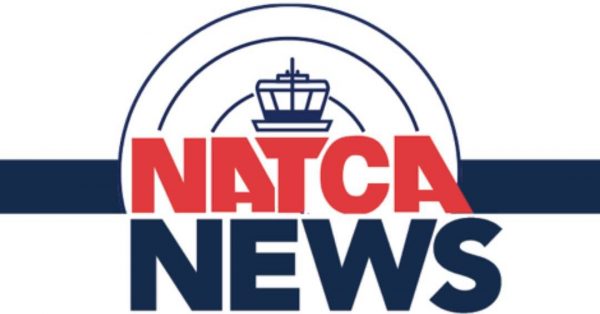
NATCA: FAA’S SAFETY REVIEW TEAM CONCLUDES INADEQUATE CONTROLLER STAFFING INTRODUCES RISK INTO THE NATIONAL AIRSPACE SYSTEM
(WASHINGTON) – The FAA’s National Airspace System (NAS) Safety Review Team (SRT) report, which was issued today, reinforces what NATCA has been saying about air traffic control staffing for a decade when it wrote that “these issues are eroding the margin of safety and injecting risk into the system, and the ATO must take action to urgently address this staffing crisis.”
The SRT found that controller staffing shortages lead to diminished air traffic capacity and inefficient operations. The SRT also found that overtime is at historically high levels, as a result of the staffing shortage, concluding that it introduces additional risk into the NAS. Last week, before the Senate Aviation Subcommittee, NATCA President Rich Santa testified, “last year, controllers at 40% of FAA facilities worked 6-days a week at least once per month. Several facilities required 6-day workweeks every week.”
The SRT reinforced what the Department of Transportation Inspector General concluded in its audit issued this past June when it concluded, “FAA has made limited efforts to ensure adequate controller staffing at critical air traffic control facilities.”
The SRT found that “when retirements and other attrition is accounted for, the [FAA’s] hiring plan produces a negligible improvement over today’s understaffed levels, resulting in a net increase of fewer than 200 air traffic controllers by 2032. The [Air Traffic Organization] must determine staffing needs based on actual system needs rather than on Academy throughput and budgetary constraints.”
Similarly, Santa testified, “Continuing to follow the same flawed controller staffing model utilized by the FAA after more than a decade of missed hiring goals and missed staffing projections will continue this downward trend. A new approach is needed.”
NATCA and the ATO issued a joint report to Acting Administrator Billy Nolan at the end of January 2023 that reflects facility staffing needs of fully certified professional controllers (CPCs) based on actual system requirements. Those facility staffing targets included in the Collaborative Resources Workgroup (CRWG) report, which were validated by the MITRE Corporation, could be adopted today and used as the basis for the FAA’s annual Controller Workforce Plan (CWP) moving forward. Both the “Securing Growth and Robust Leadership in American Aviation Act” (H.R. 3935), which passed House in July with an overwhelming bipartisan majority, and the U.S. Senate Commerce, Science, and Transportation Committee’s “FAA Reauthorization Act of 2023” (S. 1939) would require the FAA to base its CWP on the CRWG’s CPC targets rather than the flawed FAA finance-based staffing model.
The House Reauthorization bill also requires maximum hiring of air traffic controllers for its entire five-year duration. A standalone bipartisan Senate bill, the Air Traffic Controllers Hiring Act of 2023 (S. 2839), would require the same thing. We hope that this bill will be added to the Senate’s Reauthorization bill. Ultimately, the FAA would need to engage in maximum hiring for the next 10 years to reach the CRWG CPC staffing targets.
NATCA supports expanding capacity at the FAA Academy and implementing high-fidelity Tower Simulator Systems, both of which are included in the Senate’s FAA Reauthorization bill.
The SRT also made significant recommendations on FAA funding. FAA must be transparent with its need for increased funding for its Facilities and Equipment budget, which provides resources for physical infrastructure repairs and sustainment, equipment modernization, and major capital projects. Congress has always met the Agency’s stated need, but the FAA has consistently requested less than it needs, while also failing to adjust for inflation for more than a decade. This has severely restricted the agency’s ability to meet its needs.
Newly appointed FAA Administrator Whitaker now has a unique opportunity to course correct and make the much-needed changes to how the FAA reports to Congress both its staffing and funding needs. We look forward to working with him and continuing to work with Congress to address both subjects.
FOR MORE INFORMATION:
Galen Munroe, Deputy Director of Public Affairs; 202-220-9802, [email protected].
-30-
The National Air Traffic Controllers Association (NATCA) is a labor union and aviation safety organization in the United States that represents nearly 20,000 highly skilled air traffic controllers, engineers, and other aviation safety-related professionals. NATCA was certified in 1987 by the Federal Labor Relations Authority to be the exclusive bargaining representative for air traffic controllers employed by the Federal Aviation Administration. Today, NATCA is one of the strongest labor unions in the federal sector and represents a range of aviation safety professionals in 15 FAA bargaining units, five Department of Defense air traffic facilities, and 123 federal contract towers. These air traffic controllers and other aviation safety professionals make vital contributions to the U.S. economy and make modern life possible by coordinating the safe, orderly, and expeditious movement of one billion aviation passengers and millions of tons of freight within the National Airspace System each year. NATCA is headquartered in Washington, D.C., and is affiliated with the AFL-CIO.

